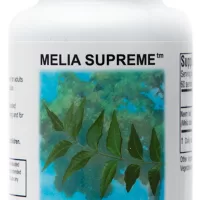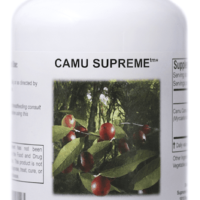Although Lyme disease is carried and transmitted through the bite of an infected tick, they are not the cause of Lyme disease. Lyme disease is an infection which is caused by Borrelia burgdorferi and can be transmitted to humans by the bite of an infected tick, most commonly the blacklegged tick, also known as deer tick. Lyme borreliosis
Although other insects and animals can be infected as well as carry Lyme disease, the only known transmission of the Borrelia burgdorferi bacterium is through the bite of a tick.According to the CDC there is no credible evidence supporting Lyme disease being spread through air, food, water, or the bite of other insects.
Signs and symptoms of Lyme disease:
Common symptoms include headache, fatigue, fever, skin rashes also known as erythema migrans. Infection can be spread to the nervous system, heart and joints if left untreated.
- Rash – Generally not itchy or painful but may feel warm to the touch and can develop in more than one place on the body.
- Joint pain – Severe joint pain and swelling.
- Neurological problems – Inflammation of the membranes surrounding the brain (Meningitis), temporary paralysis of one side of your face (Bell’s Palsy), numbness or weakness in your limbs, and impaired muscle movement.
- Other associated symptoms – Chills, body aches, headache, neck stiffness and swollen lymph nodes.
Rare signs and symptoms of Lyme disease
- Heart problems, such as an irregular heartbeat
- Liver inflammation (Hepatitis)
- Severe fatigue
- Eye inflammation
Risk factors
The most common risk factors for Lyme disease include:
- Wooded or grassy areas – Deer ticks are found mostly in the heavily wooded areas. Children who to spend a lot of time in grassy areas are especially at risk. Adults with outdoor occupations also are at increased risk.
- Having exposed skin – Protect yourself in areas where ticks are common and try to wear full sleeve clothing and long pants.
- Not removing ticks promptly or properly – The longer a tick remains attached the more opportunity bacteria from a tick bite has to enter your bloodstream. If you remove a tick within two days, your risk of developing Lyme disease is decreased.
Complications
If Lyme disease is left untreated you may experience the following complications:
- Chronic joint inflammation (Lyme arthritis), particularly of the knee
- Neurological symptoms, such as facial palsy and neuropathy
- Cognitive defects, such as impaired memory
- Heart rhythm irregularities
Diagnosis of Lyme disease:
Lab tests will be suggested by your doctor to recognize anti bodies that will help confirm the diagnosis. These include:
- Enzyme-linked immunosorbent test (ELISA) test. This test is commonly used to detect Lyme disease, but because it can sometimes yield false-positive results, it is not used as the only basis for diagnosis. This test may not be positive during the early stage of Lyme disease, but the rash is sufficiently distinctive to make the diagnosis without further testing.
- Western blot test. If the ELISA test is positive, this test is usually conducted to confirm the diagnosis. In this two-step approach, the Western blot detects antibodies.
- Polymerase chain reaction (PCR) can be used to assess people with persistent Lyme arthritis or nervous system symptoms. It is performed on joint fluid or spinal fluid.
Treatment of Lyme disease:
It is beneficial to treat Lyme disease in the initial stage. The duration of initial treatment can be 14 to 21 days by taking antibiotics to eliminate infections. Medicines used in the treatment of Lyme disease include:
- Doxycycline for adults and children older than 8 years’ old
- Cefuroxime and amoxicillin for adults, younger children, and women who are nursing or breastfeeding
Role of Morinda:
Different researches have shown that Morinda citrifolia is effective for arthritis, lyme disease, and is an important immune regulator. It has many antifungal, antibacterial and anti-inflammatory compounds.
The antioxidant potential of Morinda juice also has antipsychotic, antifungal, antibacterial and anti-inflammatory effects that are valuable in curing problems like arthritis and central nervous system-related disorders. It also boosts energy, assists in preventing common body weakness, speeds up wound healing, and also improves the immune system of the body.
Morinda shows a dual action for the immune system: it will defeat microbes and stimulate the inherent immune cells in your body. It stimulates NK cells (natural killer cells) that are your main immune cells which fight cancer. It also slows the formation of blood vessels to cancer tumors.
Use of melia:
Melia Supreme is another broad-spectrum antimicrobial. Melia Supreme contains 100 percent powdered neem leaf (azadirachta) and having no any additional fillers, binders or flow agents. Melia Supreme is often used in conjunction with Morinda Supreme. Together they are a powerful combination against drug-resistant microbes. Melia is effective against spirochetes (as in Lyme disease).
Patients with Lyme disease or other spirochete infections often resort to high doses of antibiotics. This therapy is effective against the Lyme spirochete in some patients but very detrimental to the digestive tract and microbiome. Melia does not harm beneficial gut bacteria in the same way as high-dose antibiotics do and is still effective for Lyme and other spirochete infections.
Use of Taksumi:
Taksumi has anti-fungal and anti-bacterial properties. It is commonly known as bamboo ash or charcoal powder and is used as a detoxifier. This supplement assists you in getting toxins out of the body and lightens the liver and kidney load.
In regard to Lyme disease, your body has to deal with the processing of toxins and the reaction is known as herxheimer. Takesumi and products like it can help you through these herxheimer reactions. It also helps to detox certain heavy metals. This is good as heavy metals can interfere with your healing. Besides charcoal powder, some people use bentonite clay for similar reasons.
In addition to being a safe and effective treatment for removing toxins and poison from the system, additional activated charcoal uses include deodorizing and disinfecting, it is an important step in treating Lyme disease.
It is recommended that activated carbon (activated charcoal) be used and provides an effective way in helping the body expel harmful substances to naturally treat parasitic infections and toxicity.





